
by Molly Jameson | Oct 6, 2015

A diverse garden attracts pollinators and helps balance soil fertility. Photo by Molly Jameson.
The kids are back to school and you know what that means – everyone in the house will soon come down with the sniffles and a sore throat. But what if when the kids came home, Jack went straight to his room, Susie to her room, Dad went to work in the garage, and Mom read in the office? This separation – along with good hand washing techniques – may be what prevents the entire house from turning into a sick ward. Since humans are very closely related genetically, we are susceptible to many of the same diseases. Well, believe it or not, plant families operate very similarly. If you keep planting crops together that are in the same plant family, they will be susceptible to the same diseases.
Although it can be challenging to keep your family from getting sick, there are certain practices in the garden that can go a long way in keeping your vegetable plants disease free and healthy. One easy step you can take is implementing a crop rotation. By separating crops that are in the same family during the season and not planting the same plant families in the same locations year after year, you not only help prevent diseases, but it will also help control insects, balance nutrients, and improve the condition of your soil.
Probably the most important reason to use a crop rotation system is to prevent plant diseases. For example, if you grow tomatoes in the same section of your garden year after year, certain pathogens that attack tomatoes, such as some bacterial spots and blights, can overwinter in your garden, and will have an easily accessible host (next year’s tomatoes) the following spring. Tomatoes are in the nightshade family, along with crops such as potatoes, peppers, and eggplants. If these crops are planted in the same location, they then become susceptible to the same pathogens, and the cycle continues.
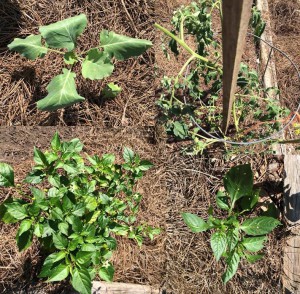
Turn your garden into a revolving collage. Photo by Molly Jameson.
Many pests in the garden are also attracted to many of the same crops. For instance, the mustard or brassica family, which includes vegetables such as broccoli, kale, collards, and turnips, easily attract aphids. By regularly rotating your brassicas, you can help break the life cycles of these garden pests.
Another important aspect of crop rotation is considering the fertility and health of your soil. Different crops require different types and amounts of nutrients to grow. Legumes, such as peas and beans, actually “fix” nitrogen from the atmosphere, which can increase the nitrogen in your soil, reducing your need to add fertilizers. You would then want to follow legumes with plants that require a lot of nitrogen, such as lettuce or broccoli. Subsequently, follow heavy feeders with light feeding root vegetables, such as onions or carrots, which are good nitrogen “scavengers.”
Root crops also help break up the soil, which is then advantageous to legumes, which thrive in loose soil. Growing leguminous “cover crops,” such as clovers and alfalfa, is an excellent way to improve the fertility and organic matter content of your soil. Incorporate the biomass of the cover crops into your soil prior to seed production for optimum benefits.
Remember that the key to both a healthy garden and a healthy diet is diversity! Incorporating many different botanical families into your garden will help break disease life cycles, attract beneficial insects, effectively utilize soil nutrients, and improve soil composition. In turn, eating many different types of vegetables will ensure that you are getting the full spectrum of vitamins and minerals. Which, by the way, will help keep your family healthy and strong and able to combat those pesky colds!
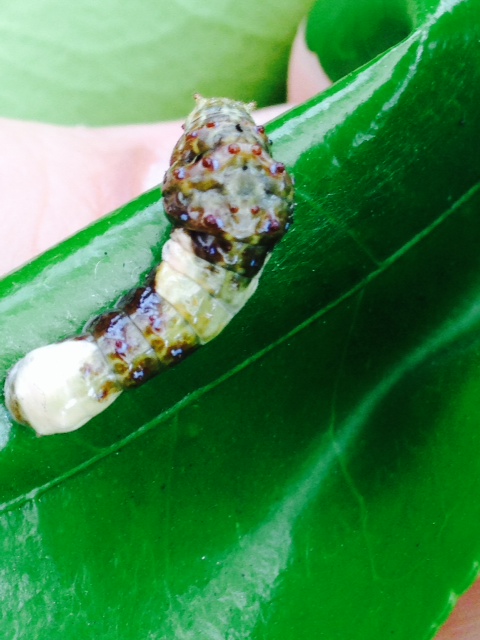
by Julie McConnell | Sep 29, 2015
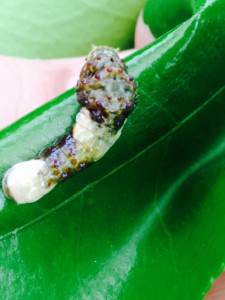
Giant Swallowtail on citrus leaf. JMcConnell, UF/IFAS
Adult butterflies are pretty easy to attract to your landscape if you provide flowering plants, but getting them to lay eggs in your garden is a little trickier.
Butterflies go through complete metamorphosis which means that they have four main life stages. The first is the egg, second they hatch into caterpillars (larvae) which feed and molt many times, the third stage is the pupa or chrysalis, and finally they emerge as colorful adults. Complete metamorphosis is considered a more advanced life cycle than incomplete and one of the reasons is because most insects that go through this process do not compete for food at different life cycles. For example, the gulf fritillary butterfly larvae needs passionflower (Passiflora spp.) to feed on – no other plant type will do. The adults visit many flowering landscape plants such as zinnias, butterfly bush, pentas, etc. The adults are feeding on nectar while the caterpillars are eating foliage.
Because the larvae are very host specific, you must offer the correct plant to attract particular butterflies. Luckily, we have many options in the Florida panhandle! Just remember if you would like to attract butterfly breeding to your yard, you must sacrifice some foliage to support the caterpillars.
• Gulf Fritillary – Passionflower
• Monarch – Native milkweed
• Giant Swallowtail – citrus
• Eastern Black Swallowtail – plants in the carrot family including dill, celery, fennel, and parsley
• Tiger Swallowtail – sweet bay magnolia, tulip poplar, black cherry
• Zebra Swallowtail – pawpaw
• Luna Moth – walnut, hickory, sweetgum, persimmon, winged sumac
If you would like to know more about individual butterfly species please visit UF/IFAS Entomology & Nematology’s Featured Creatures website.
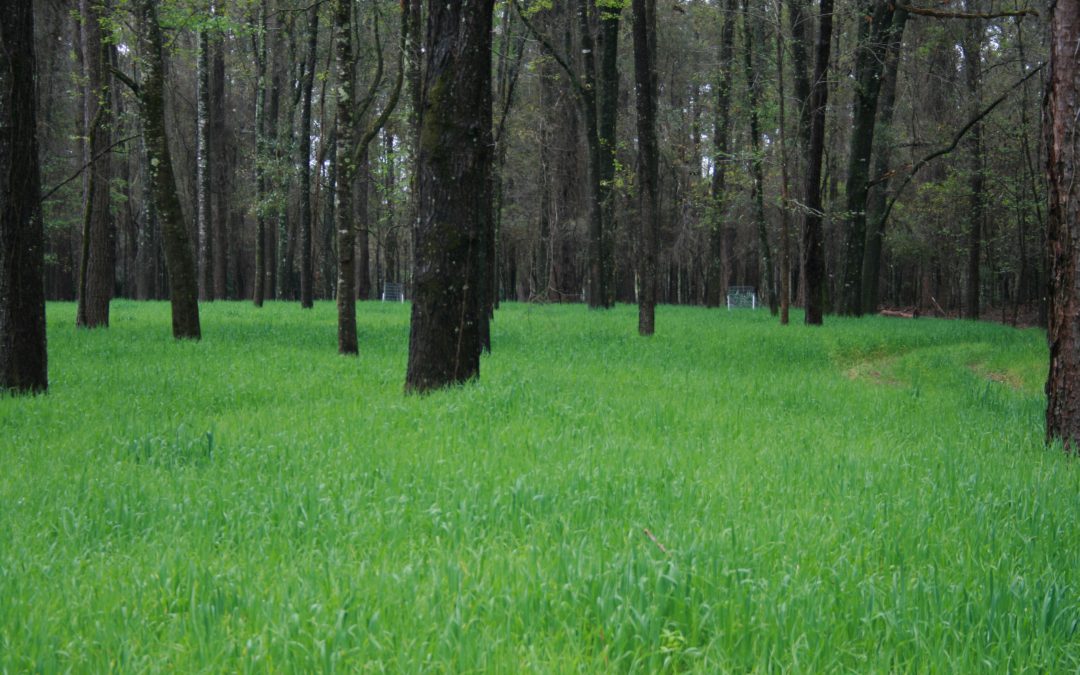
by Carrie Stevenson | Sep 29, 2015
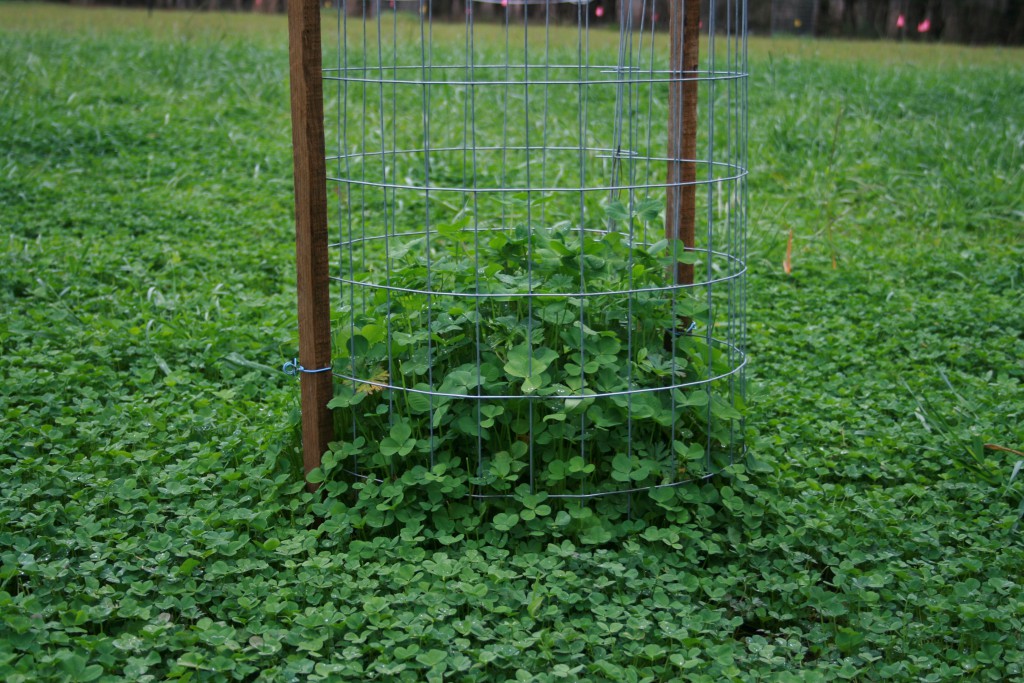
Cool Season Wildlife Food Plot. Photo by Jennifer Bearden, UF / IFAS
Many of us enhance our home landscaping with bird feeders, bird houses, bird baths and other items so that we can attract wildlife. To accomplish the same thing, many rural landowners plant wildlife food plots. While large landowners often plant several acres, food plots can work well in any sunny area and can be as small as an urban garden.
Food plot plants that do well in our area include clovers, millet, partridge pea, winter wheat, corn, sunflowers and legumes. Deer also like beggerweed and cowpeas.
If you decide to establish a wildlife food plot, you should manage it just like any other garden. The location should be sunny (a minimum of 50% sunshine is recommended) and plots often look better and wildlife will feel safer if you have a backdrop like a forest edge or tall hedgerow.
Just like any other garden, turn the soil with a garden plow or shovel and than smooth the seedbed. Seeding can be done by hand or with a handheld broadcast spreader.
Seeds should be covered lightly (1/4 to 1/2 inch in most cases) and watered as needed. In normal years watering won’t be needed, but if you get an extended dry spell you may want to give the plants additional water. Fertilizer is also recommended and will definitely give you more productivity. I have escaped that myself by growing clover in the winter for nitrogen and adding fireplace ashes to provide calcium (liming agent), potassium and phosphorus. If there is any doubt about what to apply, it is best to get a soil test and follow the recommendations for applying lime and fertilizer. Contact your local County Extension Office for more information.
I generally plant two crops in my wildlife garden–crimson clover in October (that beautiful clover you see in spring along the highways) and brown top millet in the spring after the clover dies back. I mow between seedings; this can work without tilling with some crops, if you keep the weeds under control. When I mow the millet it puts the seed on the ground and many ground feeding birds like doves move in to eat the seeds.
Speaking of gardens, the wildlife food plot makes a useful cover crop for your vegetable garden if you are taking a long vacation or just need a break for any other reason. You can also use the plants as green manure when you decide to put vegetables back in your garden.
It is always good to remember that when wildlife view your landscape, they don’t see pretty grass, flowers, shrubs and trees–they see habitat, good or bad. Food plots simply boil down to food and shelter for them.
To learn more about food for wildlife, consult this article on establishing and maintaining wildlife food sources.
Stan Rosenthal
Extension Agent
Leon County Extension Office
RosenthalS@leoncountyfl.gov
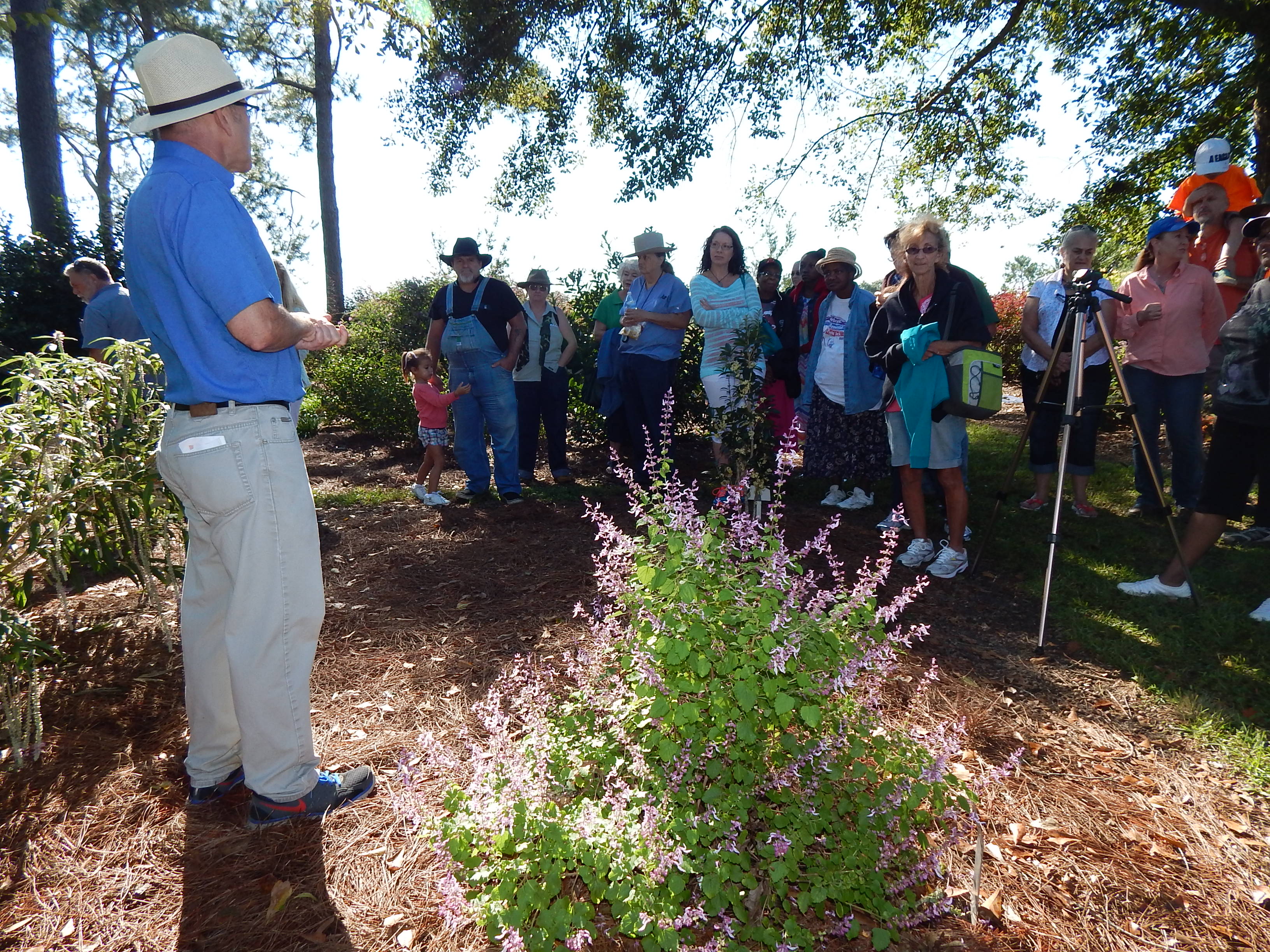
by Gary Knox | Sep 28, 2015
The University of Florida/IFAS presents Art & Garden Fall Family Festival, October 3, at the North Florida Research and Education Center (NFREC), Quincy Campus. Join us that day and discover creative ways to explore visual art and the art of gardening through demonstrations and fun activities for the whole family. Speak with experts about all your gardening questions or purchase unusual, hard-to-find, top-performing plants for our area. Take a tour of the Gardens or a trolley ride highlighting fruits and nuts that can be grown in our area. Locally grown produce and garden plants as well as arts and crafts will be for sale along with food and refreshments. Children’s arts and crafts activities will take place in a huge “Kid Zone” located in a shaded, garden area.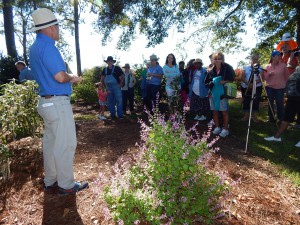
The Art & Garden Fall Festival is free and open to the public from 9 a.m. to 2 p.m. on Saturday, October 3.
The festival takes place in Gardens of the Big Bend, located in Quincy at I-10 Exit 181, just 1/8 mile north on Pat Thomas Highway (SR 267). The Gardens are located on the campus of University of Florida/IFAS, North Florida Research and Education Center, off Pat Thomas Parkway, SR 267 at 155 Research Road, Quincy, FL. Located just north of I-10 Exit 181, 3 miles south of Quincy.
Presented by the University of Florida/IFAS, North Florida Research and Education Center in collaboration with the Gadsden Arts Center, Gardening Friends of the Big Bend, the Quincy Garden Club and other area garden and arts organizations.
For more information: http://nfrec.ifas.ufl.edu/art-and-garden/ or 850-875-7100.

by Mary Salinas | Sep 24, 2015
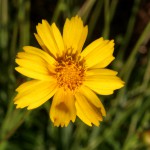
Native Lanceleaf Coreopsis. UF/IFAS Photo: Thomas Wright.
In our demonstration garden we are enjoying the small but vibrant blooms of our state wildflower Coreopsis, also commonly known as tickseed. After many years of its use in the Florida highways beautification program, Coreopsis was adopted as Florida’s official state wildflower in 1991.
Florida can boast of 16 different species of Coreopsis that occur in the state with most blooming in the spring but some species blooming in the summer to later in the fall. Some of those species are rare, endangered or only found in very limited areas of the state, while others are quite common throughout the state.

Photo credit: Mary Derrick, UF/IFAS.
Many lovely new cultivars have been introduced for our enjoyment by plant breeders through cross-breeding and selection. Some you can see in the accompanying photographs in this article.

Photo credit: Mary Derrick, UF/IFAS.
Coreopsis is an annual or short-lived perennial that makes a great addition to your garden beds. And the bees and butterflies will enjoy them! The numerous flowers readily produce seed for naturalizing in the landscape. Plant them in a sunny spot in the landscape in evenly watered but well-drained soil. Removing the dead blooms will encourage plants to prolong their blooming; you can also save the seed for replanting in new areas of your landscape.
For more information:
History of Coreopsis as Florida State Wildflower
Gardening Solutions: Coreopsis
Florida Wildflower Foundation












